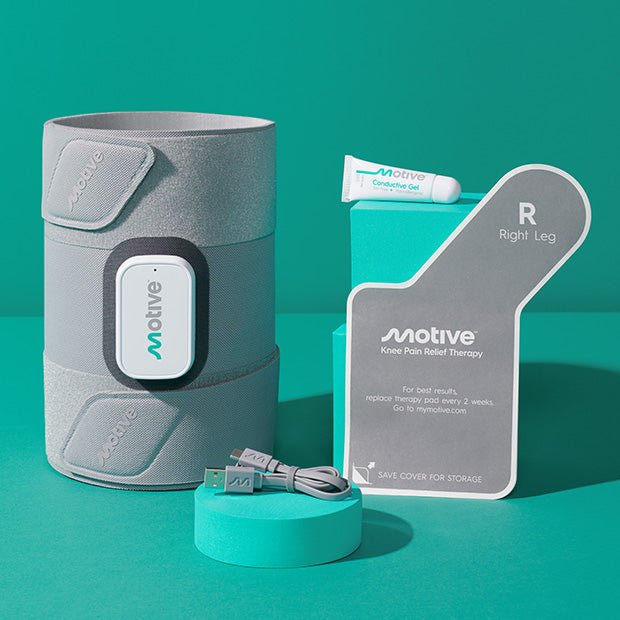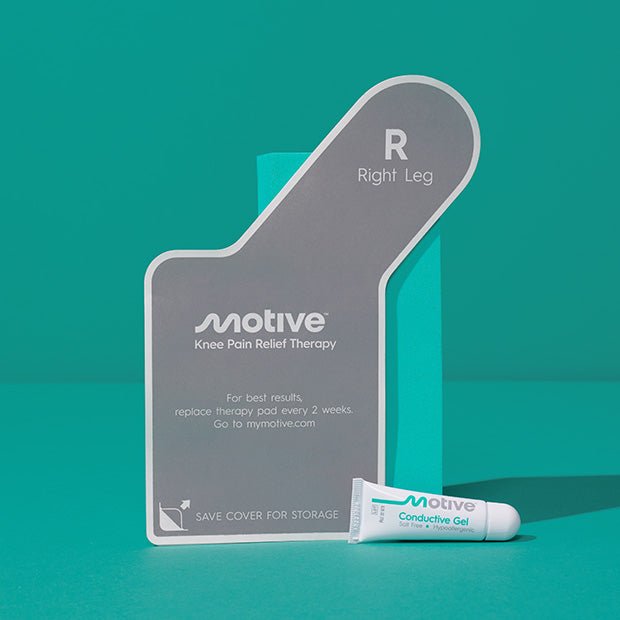
Did you know that knee osteoarthritis impacts 10% of men and 13% of women over 60? This statistic isn't just a number; it's a reflection of countless stories of individuals grappling with the relentless pain and stiffness of knee osteoarthritis.
Osteoarthritis is one of the most common causes of knee pain and can lead to mobility issues and decreased quality of life. However, it is not the only cause of knee pain. Other reasons for knee discomfort are knee injuries, overuse of the knee joint, or underlying diseases, such as rheumatoid arthritis, an autoimmune disorder.
Pain in the knee is more than an ache; it's a signal pointing to underlying issues. Understanding where the pain originates in the knee is a crucial step in diagnosing the root cause of discomfort. Knowledge of knee anatomy isn't just for healthcare providers; it's a tool for all of us to understand, treat, and even prevent knee pain to begin with.
In this article, we will review the structure of knee joints, how different parts contribute to their proper functioning, common causes of knee pain, and how strengthening muscles using Motive therapy can help you get back to a normal life.
The Anatomy of the Knee
The knee joint mainly consists of different types of bones, ligaments, tendons, muscles, and other tissues. Knowing how each part contributes to your movement is the first step in resolving your pain. Here’s how each component helps in our joint mobility and stability:
Bones
The knee joint is one of the most complex hinge joints in the human body. It consists of three types of bones:
- Femur (thigh bone or upper leg bone)- Tibia (shin bone or front lower leg bone)
- Patella (kneecap or the thick, triangular bone positioned above other bones in front of the knee)
Ligaments
It’s a band of tough fibrous tissue that connects one bone to another. The three types of ligaments that are part of the knee joint are:
- The anterior cruciate ligament (ACL) hinders the femur from moving backward on the tibia and the tibia from moving forward on the femur.- The medial collateral ligament (MCL) stabilizes the inner knee part.
- The posterior cruciate ligament (PCL) stops the femur from moving forward on the tibia or the tibia from moving backward on the femur.
- The lateral collateral ligament (LCL) supports the knee's outer part.
Tendons
It’s a tough band of soft tissues that connect bones to muscles (unlike ligaments that connect bone to bone) and provide stability to the joint. The largest tendon of the knee is the patellar tendon, which extends from the thigh’s quadriceps muscles, covering the kneecap, to the front of the tibia.
Cartilage
The two types of cartilage that make the knee are:
Meniscus
It’s a crescent-shaped disc that acts as a shock absorber and prevents any friction between two bones while allowing a range of motion. It also stabilizes the knee, improves balance, and distributes weight between the femur and tibia correctly.
Articular Cartilage
It’s a thin layer of cartilage present on the femur and back of the patella. Additionally, it prevents two bones from rubbing against each other while moving your knee.
The knee joint is covered by a membrane known as synovium, which generates synovial fluid to keep the meniscus smooth for gliding movement of the knee joint.
Muscles
The quadriceps and hamstring muscles are two muscles that help flex the knee. The four quadriceps muscles present in front of the thigh help straighten the knee, and the three hamstring muscles at the back of the thigh enable bending of the knee.
Bursa
A bursa is a tiny fluid-filled sac present between soft tissue and a bone. It helps reduce friction between muscles and tendons, allows smooth movement of the knee joint, and prevents inflammation.

Figure: Knee anatomy
Common Sources of Knee Pain
Any damage or tears in any part of the knee lead to severe knee pain that requires immediate medical attention. Some of the common causes of knee pain are given below:
Arthritis
Osteoarthritis and rheumatoid arthritis are two common diseases that affect the knee. Osteoarthritis causes deterioration of cartilage, leading to tenderness, stiffness, and pain in the joint. Rheumatoid arthritis is an autoimmune disorder that affects the joint’s membrane lining, causing pain, stiffness, and redness in the affected area.
Meniscal Tears
The menisci prevents two bones from rubbing against each other while performing a range of motions. A meniscus tear can occur due to aging, accidental sprains, or sports injury. It leads to stiffness, swelling, pain, and locking of the knee.
Tendon Issues
Overuse of the knee joint leads to inflammation in tendons that causes severe pain. Patellar tendinitis is commonly referred to as jumper's knee or patellofemoral pain syndrome (PFPS), which often occurs due to playing sports that strain the tendon.
Muscle Weakness and Imbalance
Muscles control the movement of the joints. Weaker muscles (such as hamstrings and calves) around the knee joint cause stress on different parts of the knee, such as the kneecap and anterior cruciate ligament (ACL). This may lead to instability and anterior knee pain.
Knee Ligament Injuries
Any injuries during exercise or sport, such as ACL and MCL ligament injuries, cause severe knee pain along with swelling. Other injuries that can cause knee pain are bursitis, Iliotibial band syndrome, kneecap dislocation, chondromalacia patella, and Osgood-Schlatter disease.
Treatment Options
The diagnosis of the correct source of the knee pain starts with a physical examination followed by imaging tests, such as X-rays, MRI, and ultrasound. Often, arthroscopy and radionuclide bone scans are performed to determine the cause of inflammation and pain in the knee. Here are the different types of treatments given to the patients based on their diagnosis:
Non-Invasive Treatments
These include physical therapy and rehabilitation exercises that help in strengthening the knee and alleviating knee pain. Squats, lifts, and hamstring curls are some exercises that help you manage knee pain; however, it’s recommended that you consult a physical therapist first.
Another effective approach to managing knee pain is using Motive therapy, which addresses one of the root causes of knee pain, muscle weakness, by strengthening the muscles around the knee. It’s FDA-cleared therapy that can be used in the comfort of your home without any prescription from a doctor.
Surgical Treatments
These are recommended to patients in selective cases when surgery is the only option to manage severe knee pain. Some common surgical procedures for knee pain include arthroscopic surgery and knee replacement (arthroplasty) surgery.
Lifestyle Changes and Preventative Measures
Excess weight can put additional strain on your knees. Thus, managing it through exercise, yoga, and a healthy diet is an effective way to manage your knee health by alleviating stress on the knee joints.
The Role of Muscle Strength in Knee Pain Management
Muscles in knee joints control joint movement and act as the best shock absorbers. Therefore, strengthening the hamstring and quadricep muscles helps manage knee pain.
You can strengthen your knee joint muscles through exercise. Sometimes, though, exercise offers only a brief respite from the pain. When this happens, Motive knee therapy is an effective alternative for long-lasting knee pain relief. With Motive therapy, the power to overcome knee pain is literally at your fingertips, guiding you back to the joys of movement and a life unhindered by pain.
Strengthen Your Journey with Motive Knee
Knee pain is one of the most common issues among adults of all ages. Different knee problems result in different types of knee pain, which is why correct diagnosis is crucial for the right treatment.
The strength of your muscles holds the key to managing the pain, a truth that Motive knee therapy addresses. This FDA-cleared therapy is a favored choice among doctors for treating knee pain, and helping thousands of patients manage their pain and improve mobility.
If you're searching for a solution that brings effective relief right to your doorstep, Motive is your call to action. It's more than therapy; it's a partner in your journey toward a life where knee pain no longer dictates your steps. Try Motive now, and take the first step towards a stronger you.




